- Category
- Life in Ukraine
The Man Who Won’t Leave the Most Heavily Mined Place on Earth
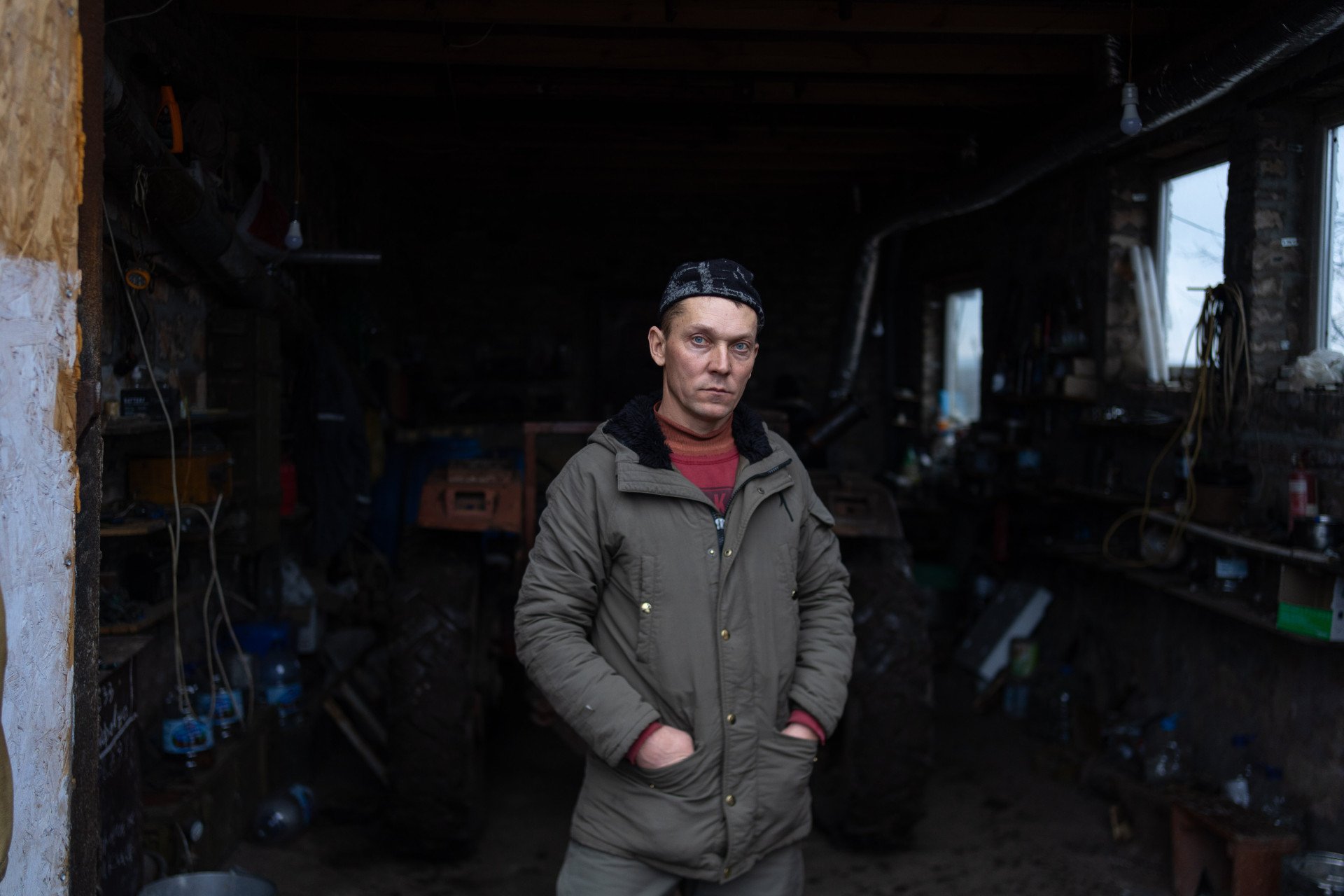
Amid the wreckage of war, some fight each day to reclaim their lives and land. In one of the world’s most heavily mined villages—located in Ukraine’s Kharkiv region—a house stands amid the ruins left by Russia’s invasion: a house Ihor built. This is the story of a farmer who chose to return home and rebuild, despite everything Russia has taken.
The walls are made of Grad rocket crates, the heating system is fashioned from spent tank shell tubes, and the water comes from a well drilled using a Uragan rocket casing.
This is the house Ihor Knyazev built in the village of Dovhenke, the Kharkiv region.
“After the Russian occupation, there was nothing left in the village. Not a single intact home, no building materials at all,” says Ihor, the only farmer in one of the most heavily mined villages in Ukraine—and, likely, the world. “I had to build with whatever I could find. And all that was left were the remains of the war.”
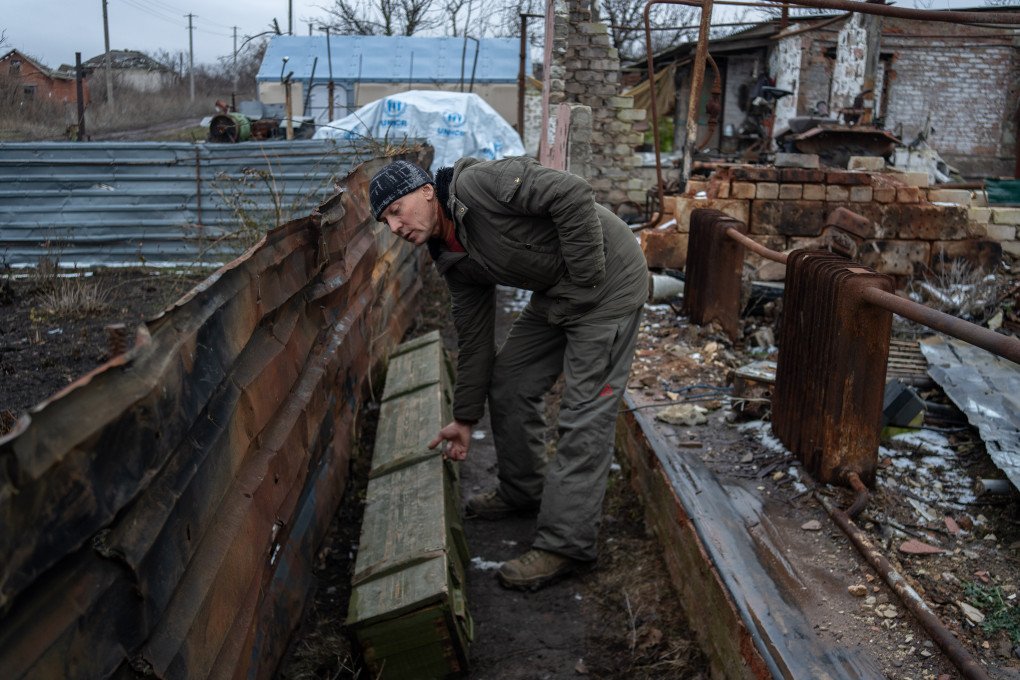
Aside from Ihor, only nine residents remain in Dovhenke after the Ukrainian forces liberated it from the Russian invaders. Mostly, they are elderly pensioners. That makes Ihor the only one creating jobs, clearing mines, and trying to rebuild the village. Lean, sun-weathered, and stubborn, Ihor has become the face of Dovhenke and its hope for revival.
“My grandfather was born here and farmed this land,” Ihor says. “My father was born here and farmed this land. I was born here and had a thriving farm, planted fields. My children were born here. Then the Russians came.”
He glances around. There isn’t a single spot in the village that doesn’t bear the scars of battle.
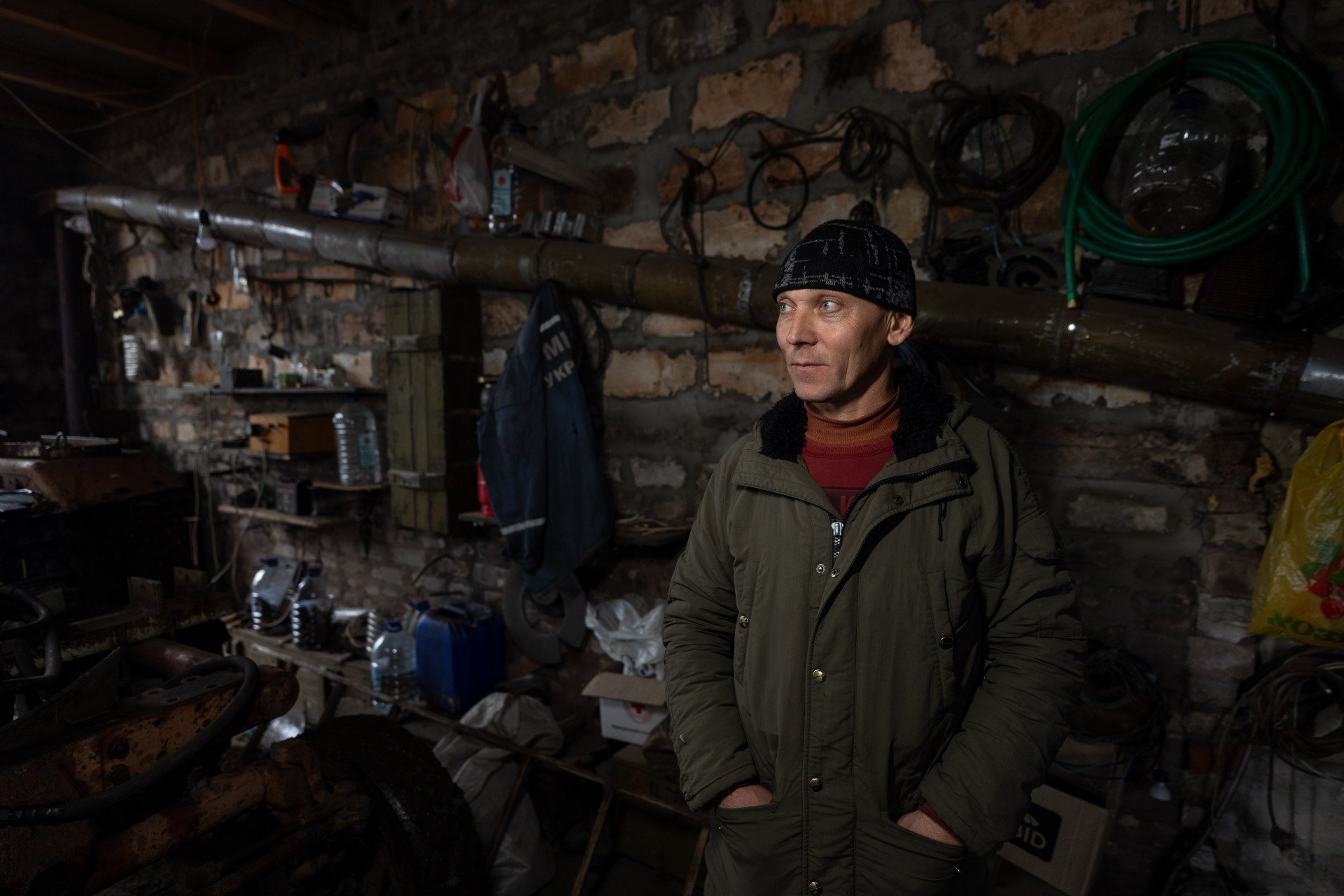
95% of the land is mined
Dovhenke lies on the border of the Donetsk and Kharkiv regions, along a highway that once connected two major industrial cities. Before the war, its 760 residents lived a peaceful farming life, selling their harvests and dairy products to Donetsk. But what was once a convenient location turned into a death trap when Russia launched its full-scale invasion.
In the spring of 2022, Dovhenke became a key battleground for the Russian advance toward Sloviansk.
“There were tank battles,” Ihor says. “Our military held their ground, then were pushed back, the village was occupied, and then our troops reclaimed it. The entire time, the area was bombarded—everything from Uragan rockets to landmines.
We are probably the most mined place in the world.
Ihor Knyazev
Ukrainian farmer from Dovhenke village
Ihor heavily but carefully steps through the village, his boots caked in black mud. The road is the only place in Dovhenke where you can walk without looking down. Cars and tractors have already passed here, making it somewhat secure.
Everywhere else is a potential minefield. The surrounding fields are lined with red-and-white danger markers. In the village itself, bomb tail fins protrude from gardens, flower beds, and even house walls. Official demining efforts are agonizingly slow.
Ukraine’s National Mine Action Center oversees the clearance process, with both government agencies—such as the State Emergency Service of Ukraine (SESU) and police bomb squads—and private operators conducting demining work. More than 60 operators are now certified, with another 50 in the process of obtaining approval. But even that isn’t enough. At the end of 2024, the SESU estimated 156,000 square kilometers of Ukraine were mined—an area the size of Greece. Experts say Ukraine is now the most heavily mined country in the world, with demining timelines ranging from 70 to over 700 years, according to a Globsec report.
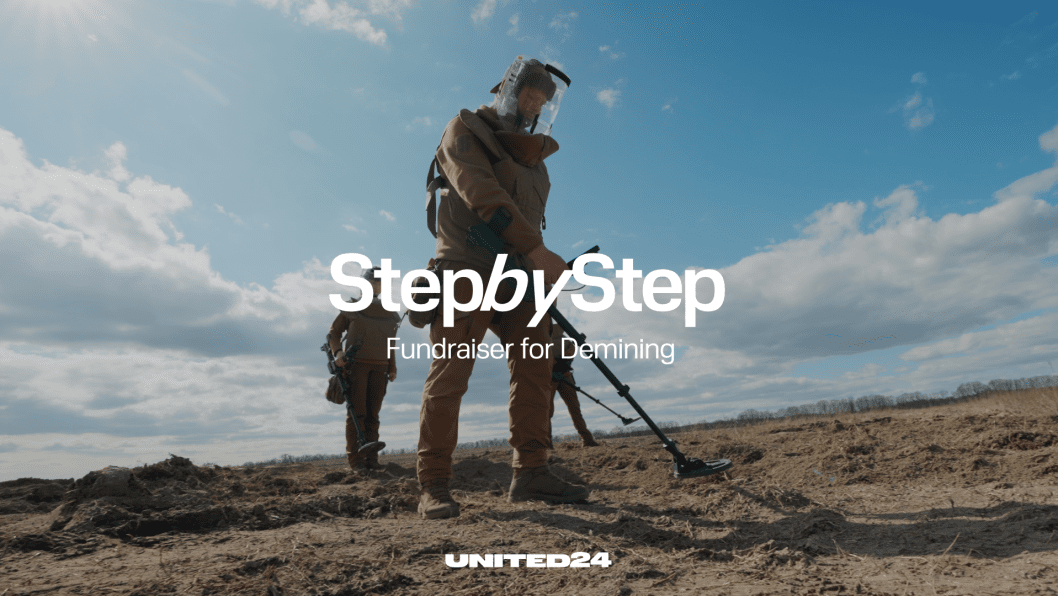
But Ihor doesn’t have decades to wait. Farming follows its own calendar—there is a time to sow and a time to harvest.
So when he returned to Dovhenke after the Russian occupation, he brought a metal detector and began clearing mines himself.
“Before the war, I had everything—sheep, fodder beets, wheat. My storage was full of grain. My farm covered 50 hectares. Now, 95% of it is mined,” he says, pointing to a small patch of land behind the charred remains of a house. It is the only area in Dovhenke where winter wheat is sprouting—land that Ihor cleared, plowed and planted on his own. The cost was high.
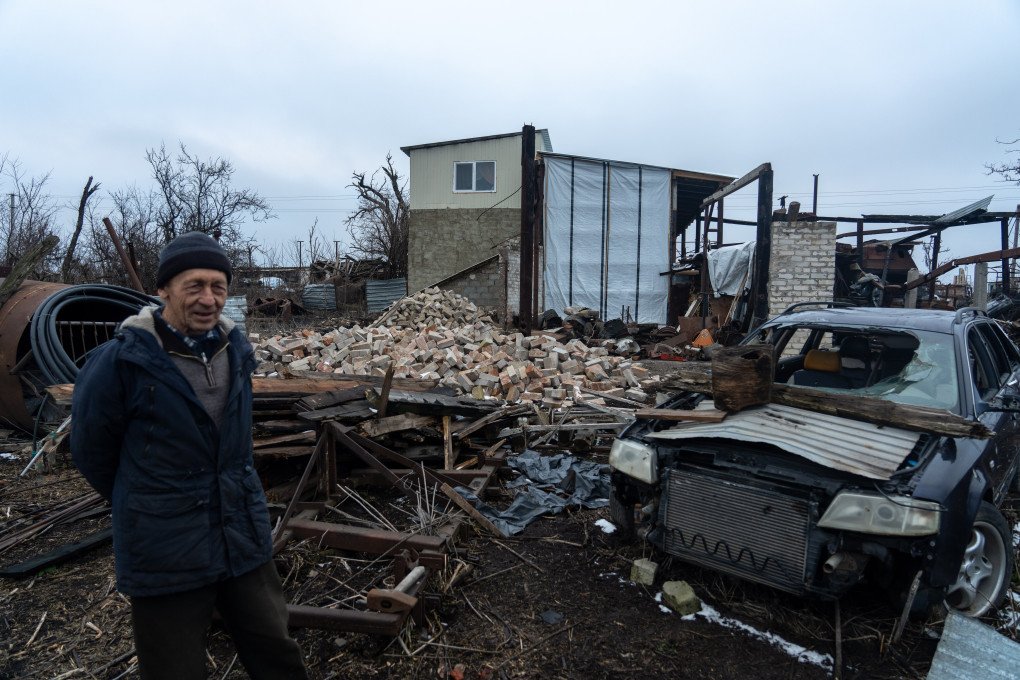
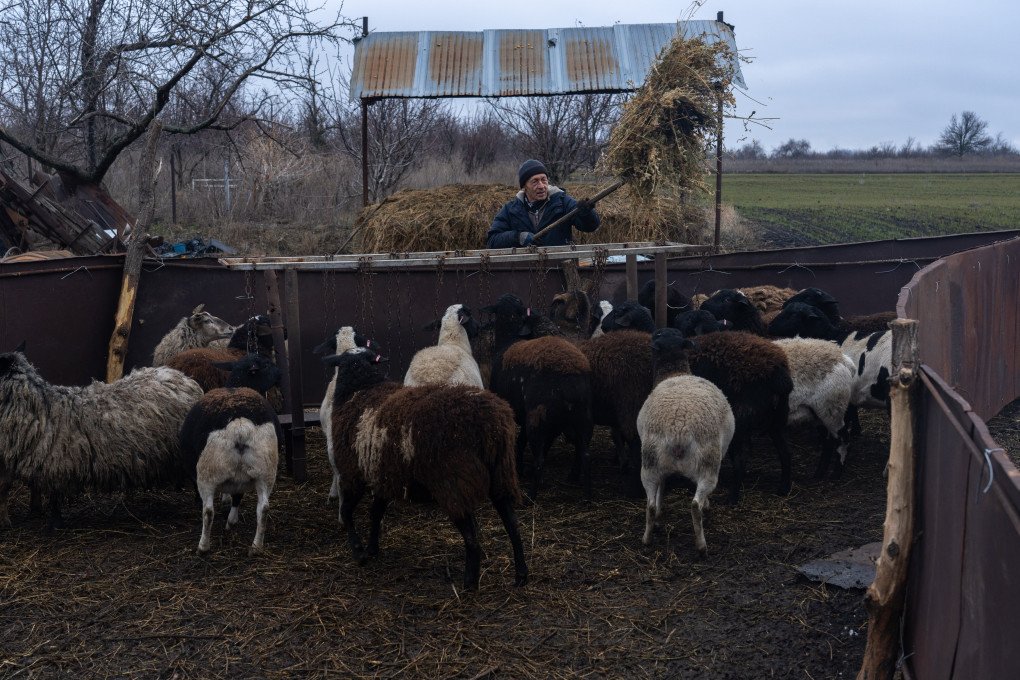
“I built a tractor from the wreckage of our burned-out machinery and started plowing,” he says. “I had checked the field with a metal detector, but some mines must have been buried deep. We cleared one row, but another was still underneath. I hit an anti-tank mine. The tractor was blown apart, and my face was cut by shrapnel. But I survived. The machine… not so much.”
The scorched, dented tractor still stands near the field. Ihor has repaired it once again, and now, like everything else in Dovhenke, it is a patchwork of salvaged parts—like a Frankenstein creation cobbled together from the wreckage of war.
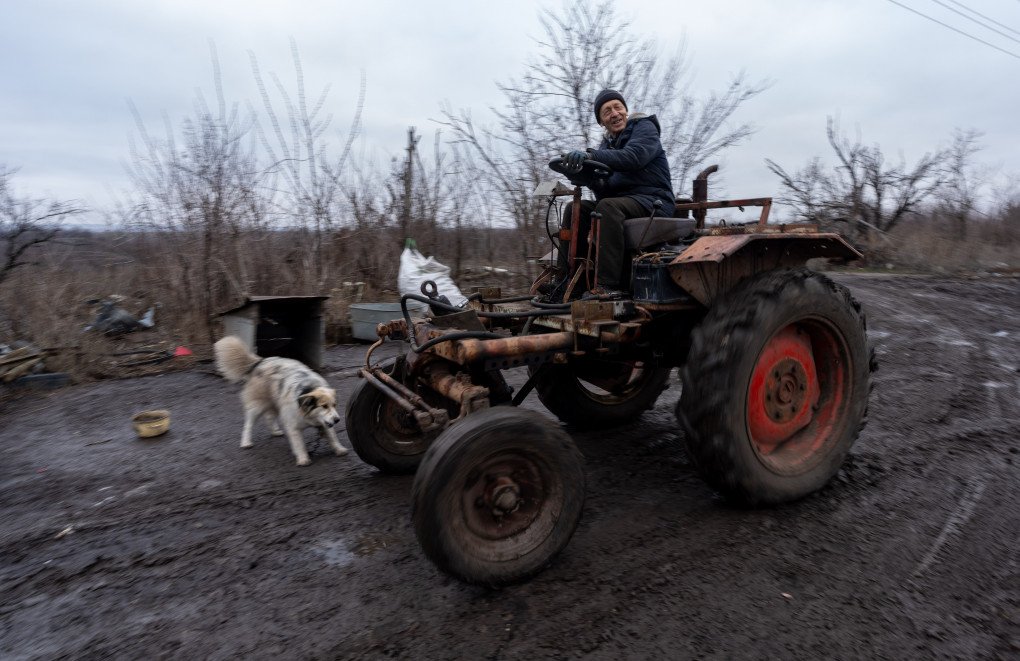
Hell on earth
The battle for Dovhenke began in the spring of 2022. The villagers didn’t leave at first, hoping Ukrainian forces would hold the town. By the time the village had turned into a battlefield, many civilians and animals were still there.
“Twelve locals were killed,” Ihor recalls. “Civilians. I have no idea how many soldiers died. No one counted the animals—dogs, goats, cows. None survived. My entire flock of sheep was torn apart, their bones are still scattered around the village. It was hell on earth.”
Before the Russian occupation, he managed to evacuate his mother, three children, and wife to relatives in Odesa. They fled under shellfire, dodging craters in the road. But his father, Anatolii, a stubborn 70-year-old, refused to leave. “I’ll be the last to go,” he said. And he was.
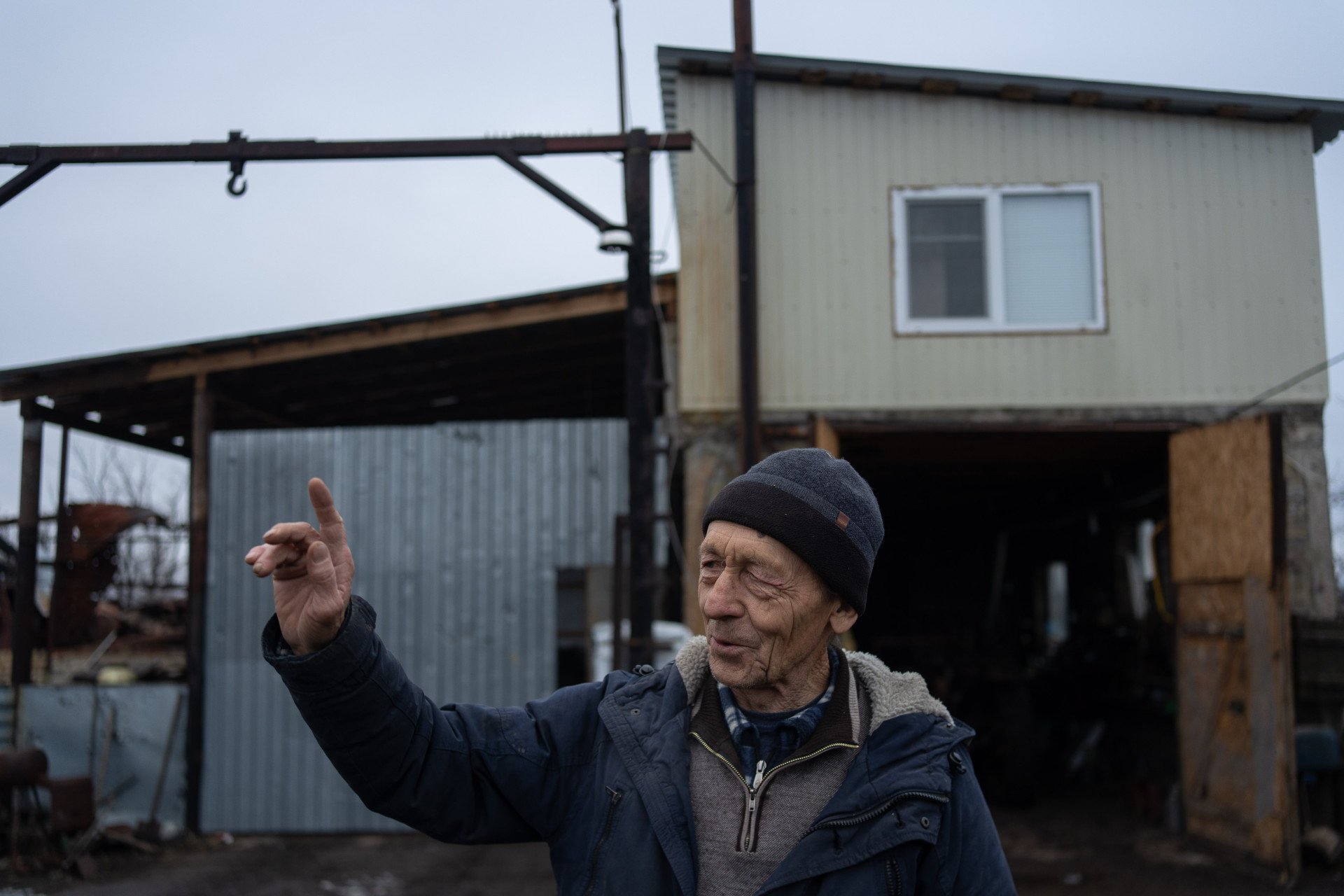
“I watched our farm burn, our house burn,” Anatolii says, lighting one cigarette after another with his calloused hands. “I was alone, living in the basement. I helped our soldiers however I could. I saw three of my neighbors killed in front of me due to a strike. I finally left with the Ukrainian military when they pulled out. They came back for their fallen. And so, with the corpses, I left through the forests.”
After his evacuation, Anatolii joined his son, Ihor, and showed him phone footage of their home, their grain stores, and their livestock going up in flames.
Ihor was not imagining returning to the way things were—not even after the village was liberated in the fall of 2022.
By his own calculations, the war cost his family’s farm 13 million hryvnias ($316,300) in equipment and crops.
Ukraine currently has 5.6 million hectares of mined farmland—an area the size of the Odesa and Khmelnytskyi regions combined. Mines and explosive ordnance impact Ukraine’s GDP by $11.2 billion annually, according to the Tony Blair Institute report.
Ihor knows these figures. But he puts it simply: “We started from zero. We didn’t even have a house.”
The way of the samurai
Ihor was the first local to return to Dovhenke in late September 2022—before any humanitarian demining teams had even arrived. He rented an apartment for his family in the nearby city of Izium while he and his father began rebuilding.
“We lived in a basement at first,” he says, nodding toward a makeshift junkyard filled with the remains of his old home. There, rusting in a pile, lie the metal “carrots” of dismantled munitions. “No electricity, no water. Nothing but the wreckage of tanks and shells.”
All around, wooden ammunition crates from Grad rockets lay scattered, each one stamped in Russian: “Client: Ministry of Defense of the Russian Federation.” Ihor decided those crates would become the walls of his new home.
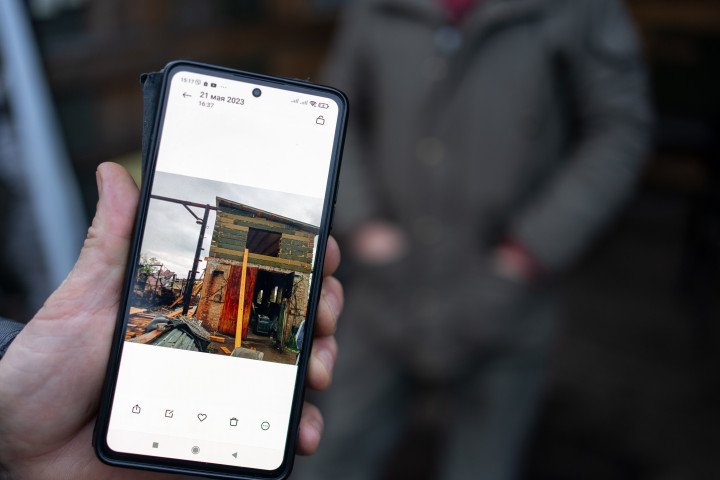
“I stuffed the crates with foam insulation, screwed them together, and sealed them with construction foam,” he says, climbing the stairs of his new home. “That’s how I built the walls, like stacking bricks.”
In two years, he and his father constructed a two-story house with several rooms. It’s simple, maybe not the coziest, but it has warmth, running water, and electricity.
For heating, Ihor connected pipes to a wood-burning stove—pipes made from the tubes of discarded tank shells.
“The water supply was completely destroyed, so I had to drill a well,” he says with a chuckle. “I made the drill bit from an Uragan rocket casing—it’s sturdy enough for the job. That’s what we call building materials around here.”
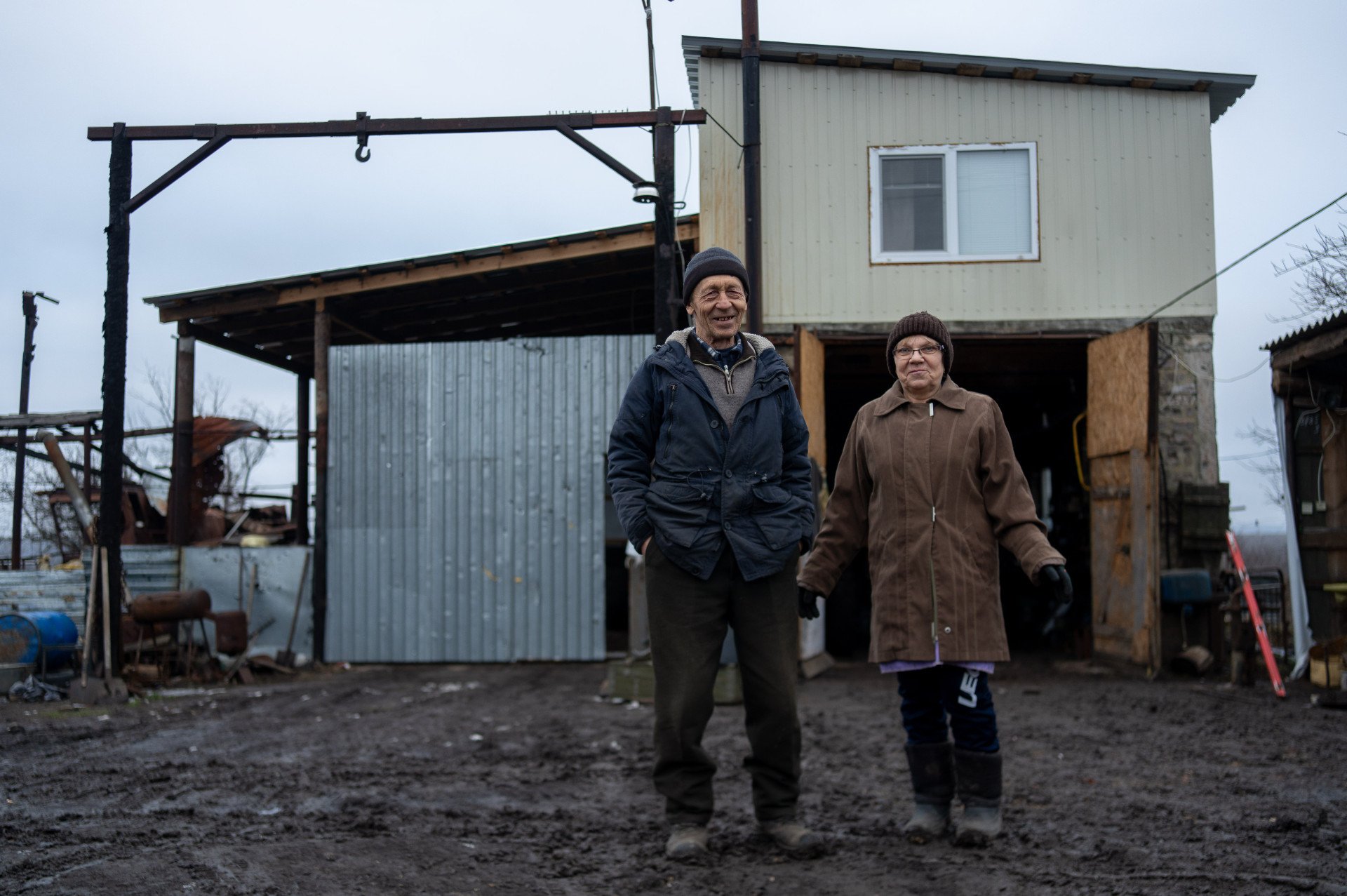
Once they had heating and water, Ihor’s mother, Natalia, moved in from Izium. But he still doesn’t dare bring his children back to Dovhenke—it’s too dangerous.
“People are constantly getting blown up here,” Ihor recounts as if describing just another part of daily life. “Recently, our soldiers came to clear mines. There was a whole line of them. They removed the ones on the surface, but underneath, there was another layer. Seventy-five anti-tank mines spread across just 1.5 hectares. The soldiers loaded a few into a pickup, started driving—and hit another mine. Five wounded. I pulled them out, applied tourniquets, and called for an ambulance.”
Explosions and demining accidents have become routine.
Ihor’s 68-year-old mother, Natalia, is happy to be home, but her world now consists only of the vegetable garden, the sheep pen they rebuilt, and a few meters of the street.
“It’s been three years since I visited my parents’ graves,” she says. “The cemetery is just a short walk away, but it’s all mined. I don’t know when I’ll see our beautiful pine forest again—it’s full of mines too.”
Natalia then heads off to feed the two large shaggy dogs they adopted after returning. In the distance, explosions echo. The dogs instantly bolt for their kennels, forgetting about the fresh food.
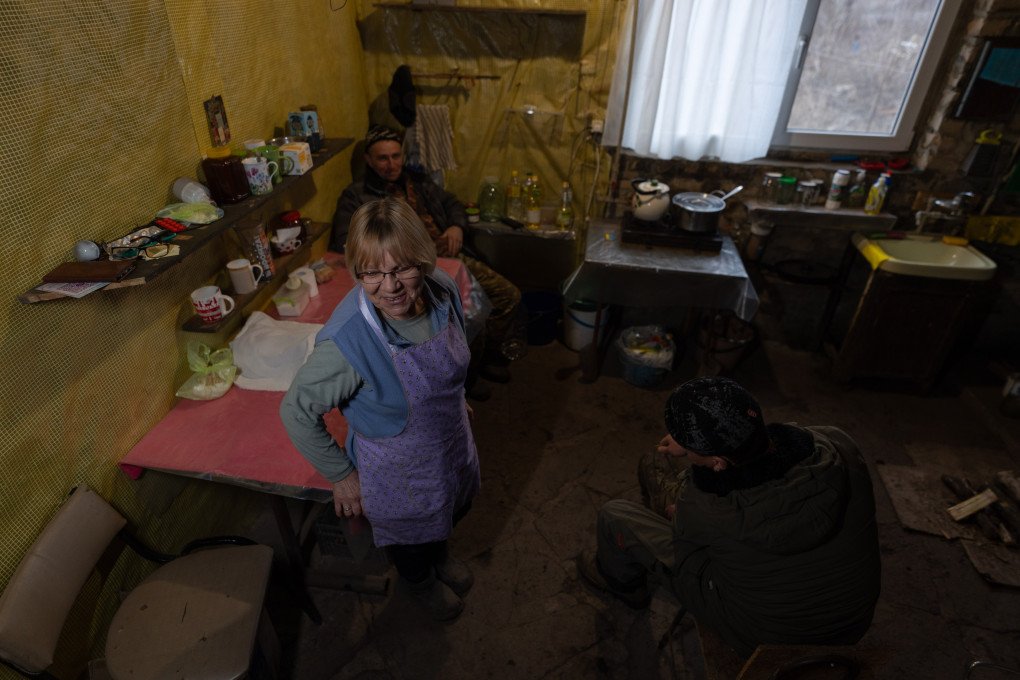
The fighting in the Donetsk region is still close enough to remind them it’s not over. Ihor fears that one day, he may lose everything he has fought to reclaim from the ruins and the mines.
“My farm is called KIA-KAM. It’s actually just mine and my father’s initials, but it sounds kind of Japanese,” Ihor laughs. Then he says he’s like the samurai in the old saying — one who has no goal, only the path.
But that’s just a joke. He has a goal. He wants to make sure the story of Dovhenke—the village where generations of his family lived—doesn’t end with him.
-c6522ae9e5320af1cc92504c0aaa1b34.png)
-e57197e6c1f200c16b3b2cc1d45169d4.jpeg)
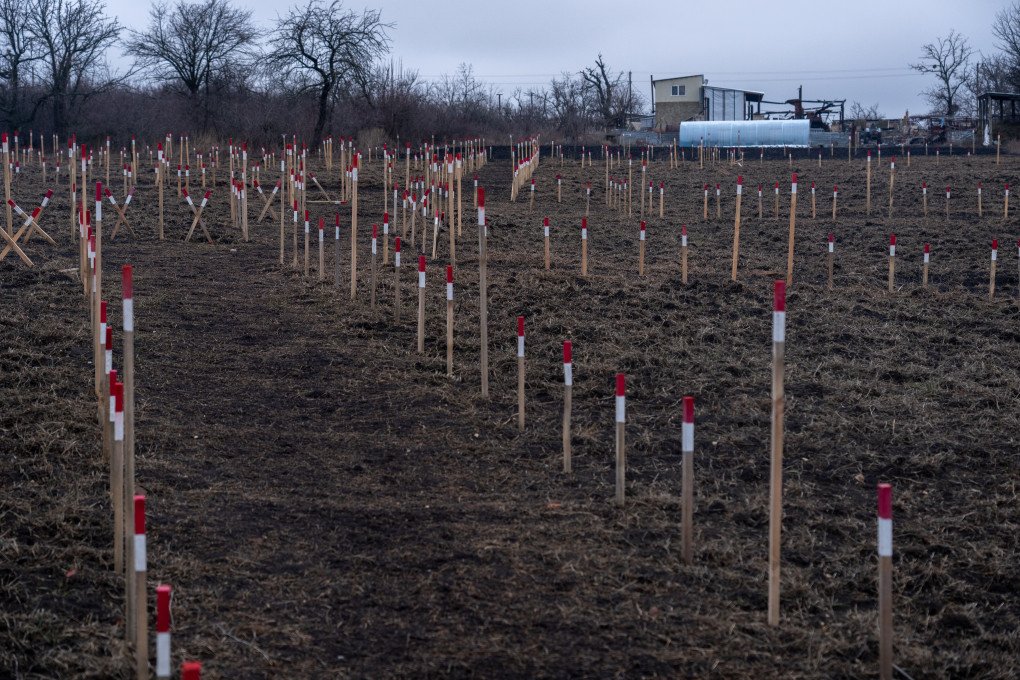
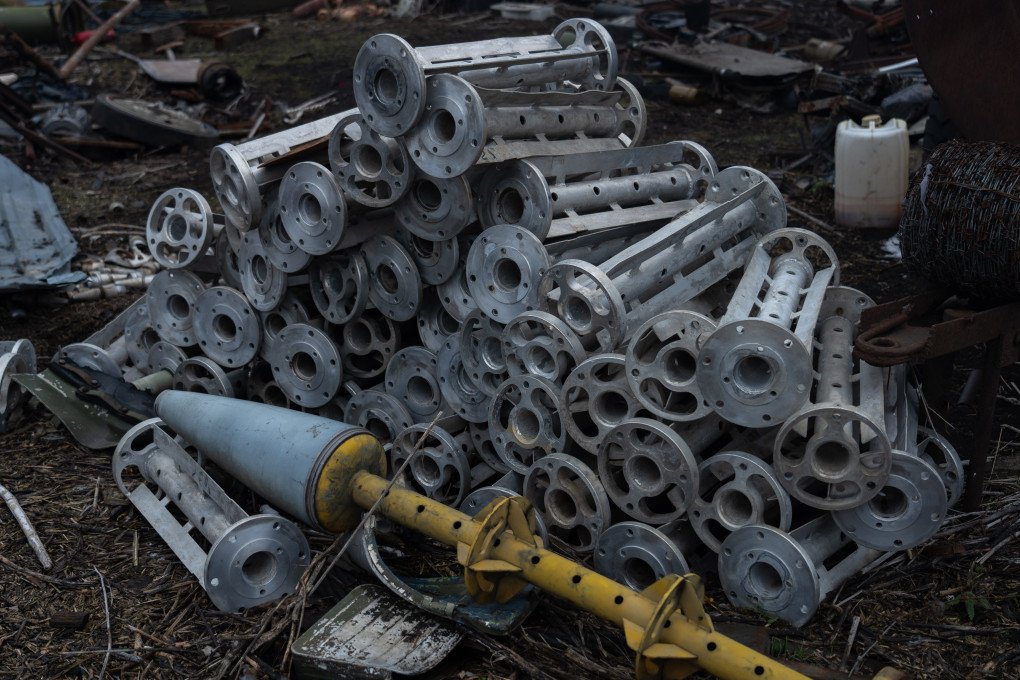
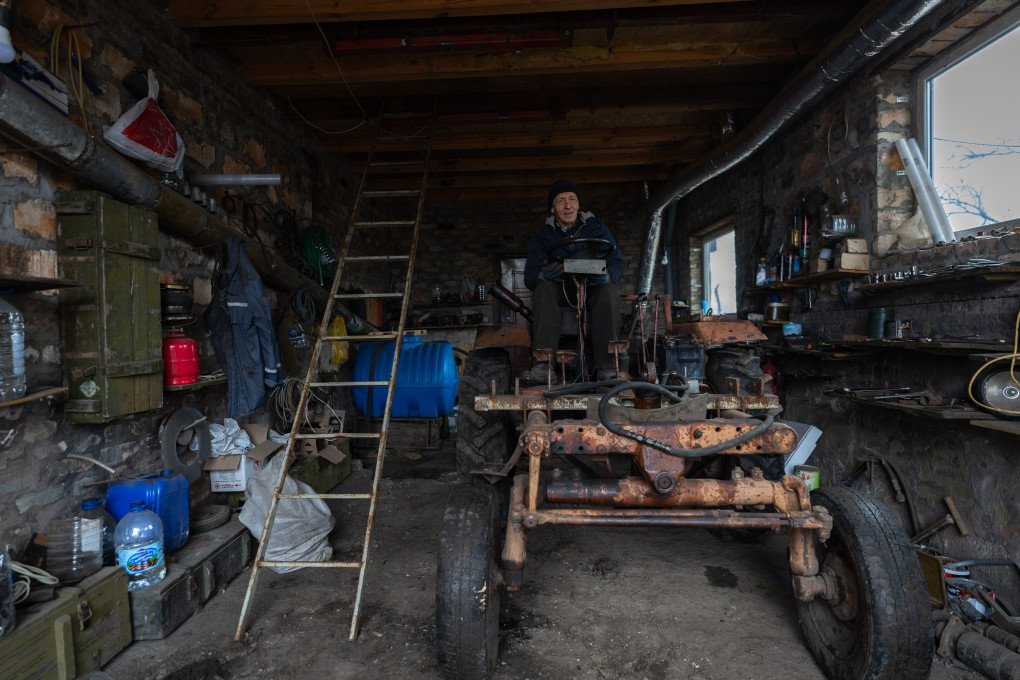
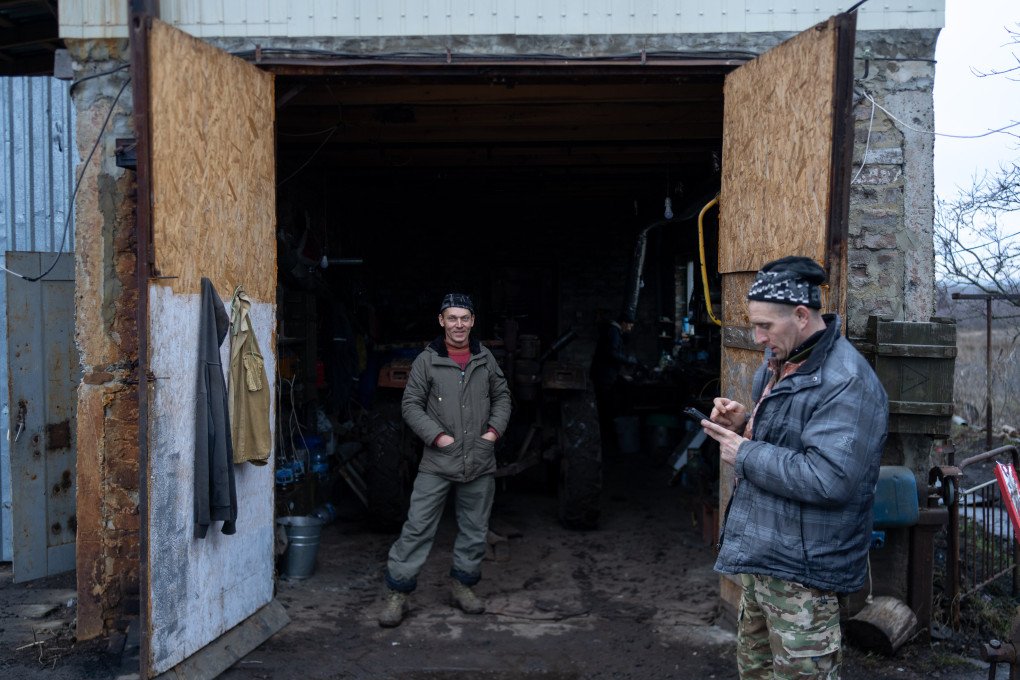
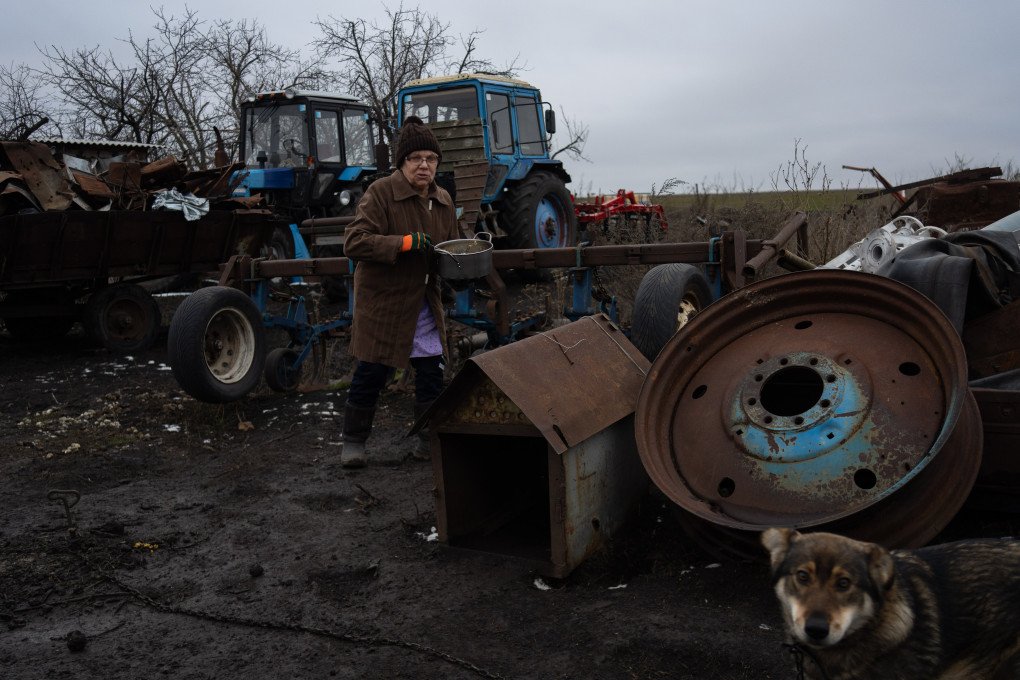
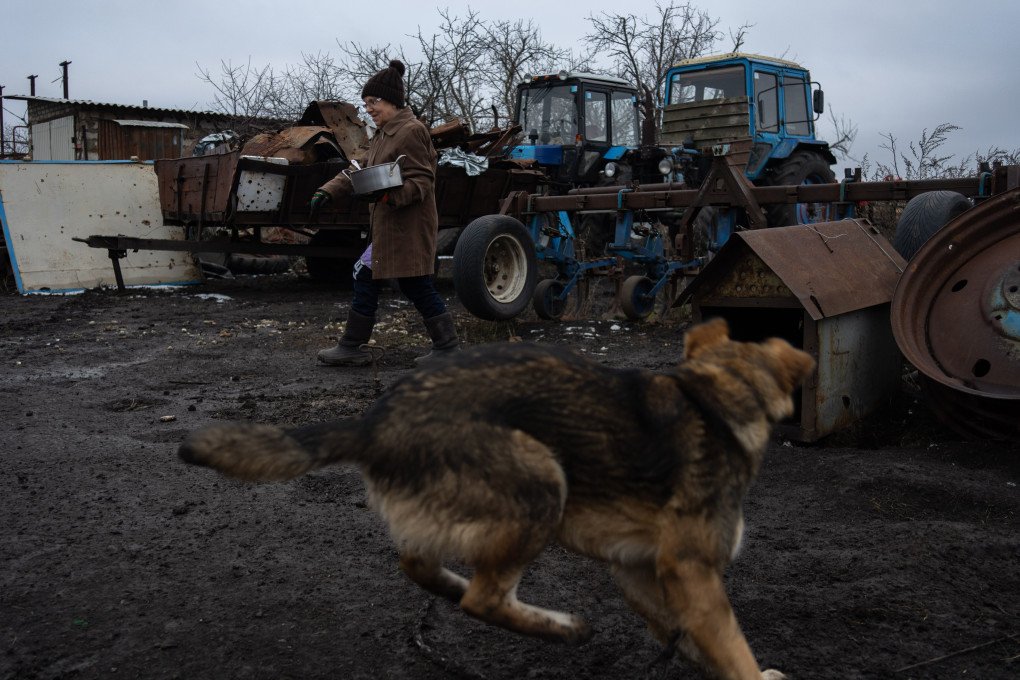

-29a1a43aba23f9bb779a1ac8b98d2121.jpeg)

-f88628fa403b11af0b72ec7b062ce954.jpeg)
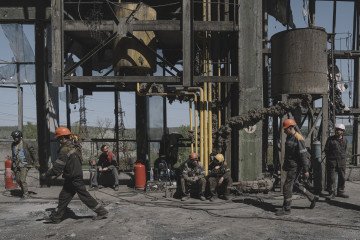
-24deccd511006ba79cfc4d798c6c2ef5.jpeg)
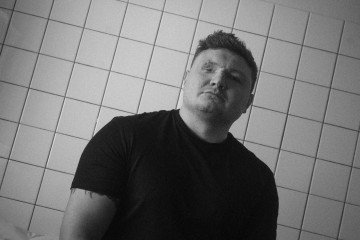
-73e9c0fd8873a094288a7552f3ac2ab4.jpg)